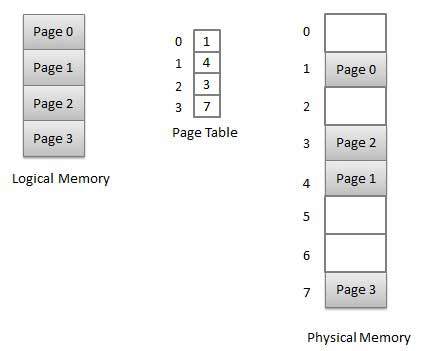I am going to write this one with simplest explanations possible, but still you gotta bear with me, I get technical at times. So here it goes, first of all, there are two terms I will be defining first -
1. RAM (Random Access Memory) -
Random Access Memory or RAM as we can call it in short, is a computer component (Well, technically it is possessed by a lot of devices including your smartphone, ATM machines, DTH operator boxes, etc).
What it basically does is, store all the files which are needed by a program to execute for a temporary period. That is, when a program starts, it needs a few files to run, it then copies those particular files from the storage drives and then puts them into the RAM.
Why does it do that ?
2. Page file
Page file is a really good technique to arrange files in the RAM. What happens in computing is that the RAM's memory locations are filled and then once they are done being used, they are removed. So, we are left with fragments of free space scattered all over and not connected to each other, and what paging does is that it stores the files randomly but notes down the sequence of that file and where it is stored. This storing is done a hard drive. Here is a diagram for explaining it easily.
Now that you know these two terms, I'll head further and tell you what a ReadyBoost technology does.
ReadyBoost just replaces a hard drive to the flash drive for paging. Now taking in context the speeds of these, a flash drive hardly reaches 20 mB/s avg. While a good quality hard disk would pop up to at least a hundred.
What else it does is that it caches all the other files on the disk. But is it really needed when you have a disk faster than your flash drive ?
1. RAM (Random Access Memory) -
Random Access Memory or RAM as we can call it in short, is a computer component (Well, technically it is possessed by a lot of devices including your smartphone, ATM machines, DTH operator boxes, etc).
What it basically does is, store all the files which are needed by a program to execute for a temporary period. That is, when a program starts, it needs a few files to run, it then copies those particular files from the storage drives and then puts them into the RAM.
Why does it do that ?
- The RAM is about a thousands times faster than the hard drive storage.
- RAMs are running at 8 Gb/s while a hard drive runs at 100 mB/s avg.
- RAM can be directly accessed by the CPU.
2. Page file
Page file is a really good technique to arrange files in the RAM. What happens in computing is that the RAM's memory locations are filled and then once they are done being used, they are removed. So, we are left with fragments of free space scattered all over and not connected to each other, and what paging does is that it stores the files randomly but notes down the sequence of that file and where it is stored. This storing is done a hard drive. Here is a diagram for explaining it easily.
Now that you know these two terms, I'll head further and tell you what a ReadyBoost technology does.
ReadyBoost just replaces a hard drive to the flash drive for paging. Now taking in context the speeds of these, a flash drive hardly reaches 20 mB/s avg. While a good quality hard disk would pop up to at least a hundred.
What else it does is that it caches all the other files on the disk. But is it really needed when you have a disk faster than your flash drive ?


0 comments:
Post a Comment
Please don't Spam in the comments section of Tech Window